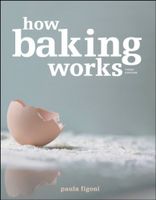Advertisement
7. Gases Evaporate.
By Paula Figoni
Published 2003
Small amounts of carbon dioxide and other gases are lost from batters and doughs as temperatures warm above room temperature. This is because wet cell walls are not completely solid, and they allow slow but steady movement of gases throughout unbaked products. At a certain point, however, cell walls rupture from the pressure of expanding gases, and large amounts of gases escape. Not coincidentally, proteins coagulate and starches gelatinize at about the same time. That is, as the structure of baked goods becomes more rigid, it also becomes more porous to gases. It is transformed from a wet foam that traps air to a porous sponge that does not. With bread, this occurs at around 160°F (72°C). It is at this point that bread dough loses its ability to retain gases and to expand in size. Instead, the gases migrate to exposed surfaces and evaporate.

